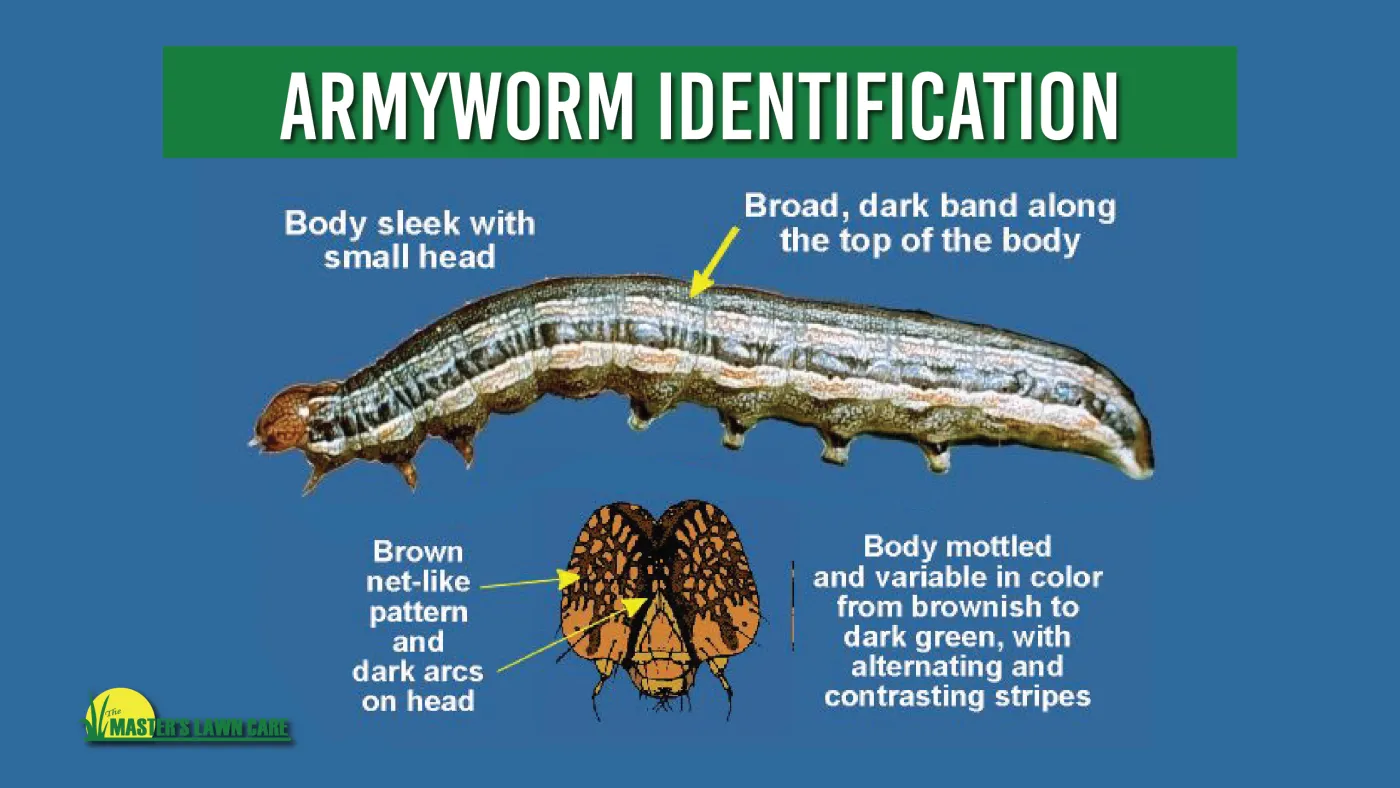The armyworm is the most common cause of damaged turfgrass on golf courses, athletic fields, and home landscapes.
The larva of armyworms can cause rapid, significant loss of leaf tissue in turfgrass. They feed primarily on Bermuda and Ryegrasses in our area, but can also move to Zoysia and St. Augustine grass where they swarm.
The name ‘armyworm’ originates from agriculture, where infestations sometimes resemble an army as they move across large agriculture fields. The same behavior can sometimes occur in turf, where areas as large as a football field can be consumed in the course of 2-3 days!
If armyworms are present in turfgrasses in large numbers, it is important to treat them as soon as possible to avoid further injury. There are several active ingredients that are effective in controlling fall armyworms, but many variations exist in formulation, use site, applicator requirements, etc. As always, be sure to follow the product label for specific instructions on timing, use rate, and application methods. For a complete list of products labeled for fall armyworm control, consult the Florida IFAS website as they are updated regularly.
They're most active at night and hide in plants and under garden debris during the day. In their larva stage, armyworms attack a variety of crops as well as grasses, sometimes moving in masses to new areas in a way as its name suggests, an army on the march.
Identification
Markings on newly hatched caterpillars are usually hard to distinguish, older larvae have distinctive stripes that run the entire length of the body. Fall armyworms are brown with yellow stripes, beet armyworms are green with light stripes. Adults are gray, mottled moths (1-1/2 inch wingspan) with a small white dot in the center of each forewing and dark margins on the hind wings.
How to Control Webworms
Treating early is the best way to control an armyworm infestation. If this happens in your yard, you can control armyworms with an insecticide. Bacillus thuringiensis (Bt) sprays are a safer alternative and ideal for use in home situations. Bt is most effective when applied to small caterpillars. If you find armyworms in your lawn, they're surface feeders so you should be able to spot them in the turf.
If you suspect armyworms as the cause of your garden/lawn woes, it’s important to identify and treat the problem quickly. Armyworms can lay devastation to a lawn or garden in a matter of days. At the first signs of brown patches and chewed plants, look for the small armyworm larvae, which are identifiable due to their green, yellow, brown, or reddish stripes that span their body length. Then, it’s time to consider treating your yard! We are here to help you get through this!
If you need help with Gainesville lawn pest treatments, give our team a call or text at (352) 378-5296. We're local and have been serving Gainesville for over 15 years. We look forward to working with you!


